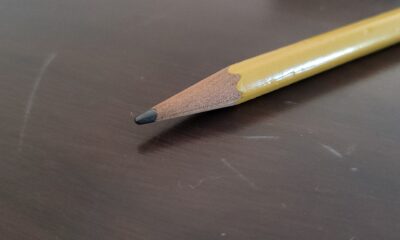In the early afternoon of Feb. 24, 2010, a SeaWorld trainer from Orlando, Fla., lost her life in a tragic accident involving a killer whale named Tilikum. Dawn Brancheau’s death came as a shock to those close to her and once again brought attention to the morality of keeping killer whales in captivity.
Dawn’s death led to thousands of articles, news stories, and the documentary film “Blackfish.” The film premiered at the 2013 Sundance Film Festival on Jan. 19, 2013, and was widely circulated by CNN films and Magnolia Pictures.
Blackfish focuses on the story of Tilikum, a 12,000-pound whale housed by SeaWorld, and the danger of keeping orcas in captivity.
Tilikum or “Tilly” is the largest male orca in captivity. He has sired 21 calves and has also been involved with the death of three people.
Tilikum’s life in captivity began on Nov. 9, 1983, when he was captured off of the east coast of Iceland along with two other orcas. Tilikum was first brought to Sealand of the Pacific, a public aquarium in British Columbia, Canada. Sealand soon became famous for its wild orcas and was a popular tourist attraction.
Life for Tilikum at Sealand was difficult. He was at the bottom of the social hierarchy with the other orcas and was often bullied and injured by the other whales. Also, trainers at Sealand utilized the training method of food motivation, meaning food was often withheld from Tilikum if he did not follow his trainer’s instructions.
Signs of trouble for Tilikum began after a few years in captivity. On Feb. 20, 1991, Keltie Byrne, a 20-year-old marine biology student, slipped into a pool containing Tilikum and two other whales.
Byrne’s was dragged around the pool and repeatedly submerged by the three orcas in front of a horrified audience. There was no way to help Byrne, and she was killed by the three whales. Sealand closed soon after the accident and Tilikum was sold to SeaWorld in Orlando.
While living at SeaWorld there is strong circumstantial evidence that Tilikum may have killed again. In 1999, the body of Daniel Dukes was discovered draped over Tilikum’s back. An autopsy revealed multiple contusions and abrasions. The cause of death was determined to be drowning or hypothermia. But Tilikum’s breaking point was that tragic February afternoon when he killed Brancheau, an experienced SeaWorld trainer.
SeaWorld misrepresented the cause of the attack and made Brancheau the scape goat for Tilikum’s violence, despite his rocky history. SeaWorld reported that Brancheau’s ponytail got caught in his teeth and he unintentionally drowned her.
But the autospy report tells a different story.
Brancheau’s cause of death was listed as drowning, but she also received multiple traumas. Her spinal cord was severed, she sustained fractures to her ribs, jawbone and vertebra, her head was scalped, and her left arm had been completely torn off.
SeaWorld claims that Tilikum did not attack Brancheau because he was driven mad by his years in captivity, but merely that it was a playful accident. Ponytails are common for both female and male trainers at SeaWorld, and before the attack they were not viewed as dangerous.
The footage of Brancheau’s attack in “Blackfish” shows Tilikum dragging her into the water by her arm, counter to what SeaWorld claims.
The best word to describe Tilikum is “psychotic.” He was likely driven to this state by a life of confinement and captivity.
The research of orcas and their behavior clearly indicates that captivity leads to deranged animals. “Blackfish” raised public awareness of Tilikum’s story, but there have been dozens of attacks on trainers by other orcas in captivity.
These whales are not bad whales. Many trainers reported Tilikum had been a joy to work with during his career. But orcas come with all of the instincts of a powerful, wild predator. They are dangerous animals. But even after all of these “accidents” SeaWorld still treats them like they are their pets.
Tilikum’s environment is not Florida. His environment is the cold water seas of Iceland where, as a young calf, he was captured and forced to live a life of confinement. There is no record of wild orcas killing humans, in the open seas off Iceland or anywhere else. The only place orcas kill humans is in captivity, where they do not belong.
The captive environment that SeaWorld has created for their orcas does not resemble their wild habitat or the social groups that are foreign to the ones that are found in the wild. Orcas have very complex societies in the wild and only elephants and higher primates have comparable social structures. Because of this many marine experts question how humane it is to keep these animals in captivity and to deprive them from their families or pods.
Killer whales are the only known mammals that live with their mothers for their entire lives, yet SeaWorld is notorious for separating their mothers from their young and depriving them of their special bond.
Orcas’ captive environment is a very stressful environment because of the small tanks of chemically altered water. Their aggressive behavior towards each other and humans is a result of the stressful environment that they live in and this type of aggression is not common in the wild. In the wild orcas are known to travel as much as 100 miles a day with their pods but in captivity they are contained to only large pools.
Although marine biologists have made huge progress on their research of killer whales, it still hasn’t changed the fact they are still in captivity.
SeaWorld is willing to sacrifice the well-being of their captive whales to make money. The orca attraction draws millions of visitors every year and SeaWorld is not willing to give that up.
The general public must start to educate themselves about the truth about SeaWorld and the animals that live there before spending money to see unhappy animals in a captive environment.













